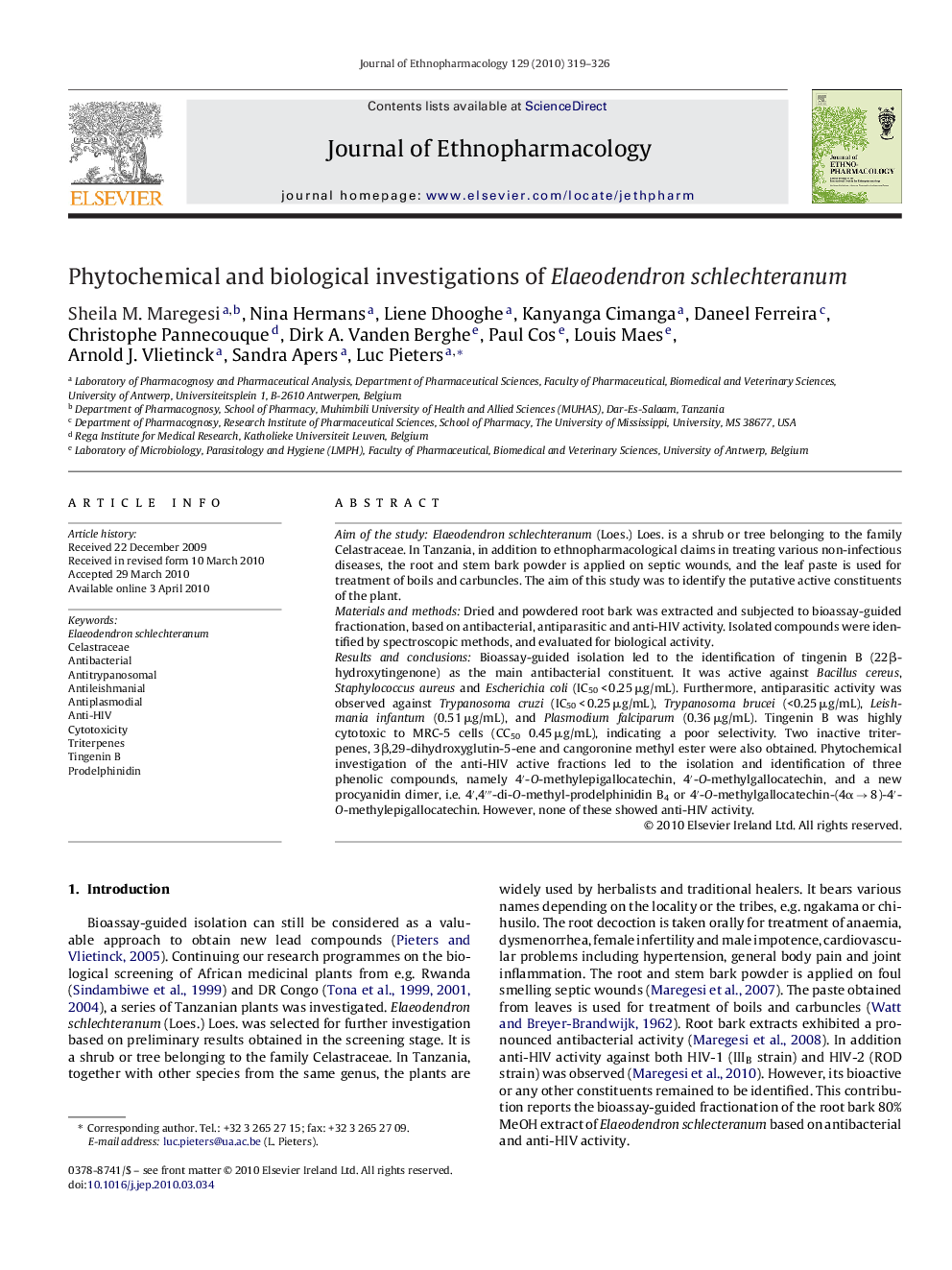| کد مقاله | کد نشریه | سال انتشار | مقاله انگلیسی | نسخه تمام متن |
|---|---|---|---|---|
| 2545855 | 1124007 | 2010 | 8 صفحه PDF | دانلود رایگان |

Aim of the studyElaeodendron schlechteranum (Loes.) Loes. is a shrub or tree belonging to the family Celastraceae. In Tanzania, in addition to ethnopharmacological claims in treating various non-infectious diseases, the root and stem bark powder is applied on septic wounds, and the leaf paste is used for treatment of boils and carbuncles. The aim of this study was to identify the putative active constituents of the plant.Materials and methodsDried and powdered root bark was extracted and subjected to bioassay-guided fractionation, based on antibacterial, antiparasitic and anti-HIV activity. Isolated compounds were identified by spectroscopic methods, and evaluated for biological activity.Results and conclusionsBioassay-guided isolation led to the identification of tingenin B (22β-hydroxytingenone) as the main antibacterial constituent. It was active against Bacillus cereus, Staphylococcus aureus and Escherichia coli (IC50 < 0.25 μg/mL). Furthermore, antiparasitic activity was observed against Trypanosoma cruzi (IC50 < 0.25 μg/mL), Trypanosoma brucei (<0.25 μg/mL), Leishmania infantum (0.51 μg/mL), and Plasmodium falciparum (0.36 μg/mL). Tingenin B was highly cytotoxic to MRC-5 cells (CC50 0.45 μg/mL), indicating a poor selectivity. Two inactive triterpenes, 3β,29-dihydroxyglutin-5-ene and cangoronine methyl ester were also obtained. Phytochemical investigation of the anti-HIV active fractions led to the isolation and identification of three phenolic compounds, namely 4′-O-methylepigallocatechin, 4′-O-methylgallocatechin, and a new procyanidin dimer, i.e. 4′,4‴-di-O-methyl-prodelphinidin B4 or 4′-O-methylgallocatechin-(4α → 8)-4′-O-methylepigallocatechin. However, none of these showed anti-HIV activity.
Bioassay-guided fractionation of Elaeodendron schlechteranum (Loes.) Loes. (Celastraceae) root bark, used in traditional medicine in Tanzania, led to the isolation of tingenin B (22β-hydroxytingenone) (2) as the main antibacterial and antiparasitic constituent. In addition, a new procyanidin dimer, i.e. 4″,4‴-di-O-methyl-prodelphinidin B4 or gallocatechin-(4α-8)-epigallocatechin-4″,4‴-dimethylether, was obtained.Figure optionsDownload as PowerPoint slide
Journal: Journal of Ethnopharmacology - Volume 129, Issue 3, 16 June 2010, Pages 319–326